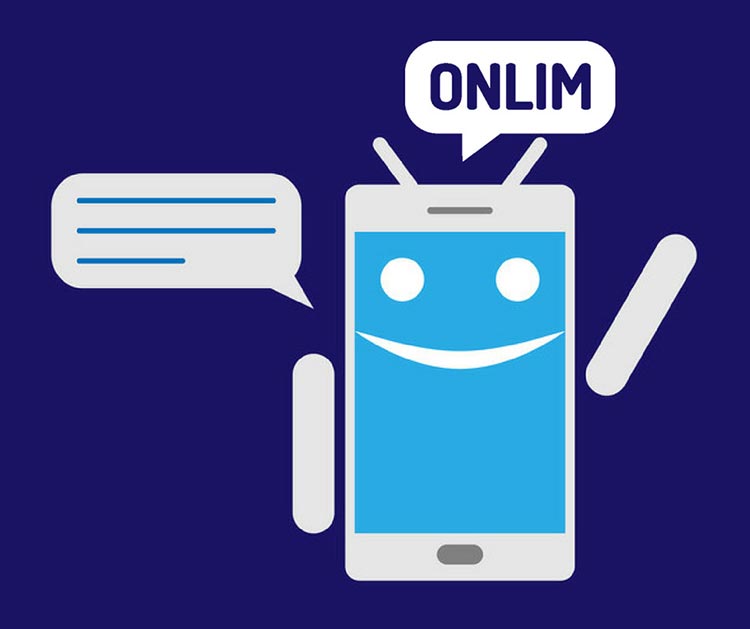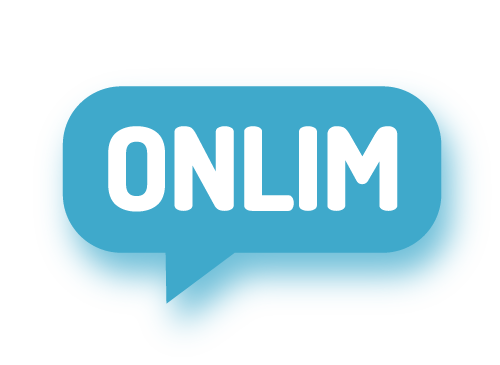What are chatbots and how do they work?
In recent years, the term “chatbot” has gained increasing significance, particularly due to the growing interest in artificial intelligence and automated systems. Especially since the hype around advanced models like ChatGPT, many people have become familiar with the term. But what exactly lies behind this technology, and how is it used today?
What are chatbots?
Chatbots are AI-powered computer programs that can conduct human-like conversations and respond to inquiries naturally. By understanding and generating text, chatbots are able to react to user requests in real-time. These systems utilize extensive datasets and advanced algorithms to understand context and provide relevant responses.
Applications of Chatbots
Chatbots are used in a variety of industries and applications:
- Customer Service: They provide 24/7 support, answer frequently asked questions, and solve simple problems, conserving human resources and increasing customer satisfaction.
- E-Commerce: Chatbots assist customers in product searches, give recommendations, and help with orders, personalizing and enhancing the shopping experience.
- Healthcare: They take on tasks such as scheduling appointments, providing medical information, and monitoring patients, making health management more efficient.
- Education: In education, chatbots support students by offering learning aids, answering questions about course content, and providing administrative assistance.
Advanced Features and New Applications
Beyond traditional applications, chatbots are increasingly being used for more complex tasks:
- Internal Communication: Within companies, chatbots improve internal communication by providing information, answering questions, and automating routine tasks.
- Business Process Automation: They take over repetitive tasks such as data processing, scheduling, and reporting, relieving employees and increasing efficiency.
- Marketing and Sales: Chatbots are used to generate leads, build customer loyalty, and conduct personalized marketing campaigns.
The Popularity and Benefits of Chatbots
The popularity of chatbots is steadily increasing as businesses recognize the advantages of this technology:
- Cost Savings: By automating routine tasks, companies can reduce personnel costs and deploy resources more efficiently.
- Scalability: Chatbots can handle an unlimited number of inquiries simultaneously, which is particularly beneficial during peak times.
- Personalization: Through machine learning, chatbots can offer personalized experiences by learning from previous interactions and precisely addressing individual needs.
What types of chatbots are there?
There are various types of chatbots, including rule-based chatbots that are based on predefined rules and scripts, and AI-powered chatbots that can learn and improve through the use of machine learning and natural language processing.
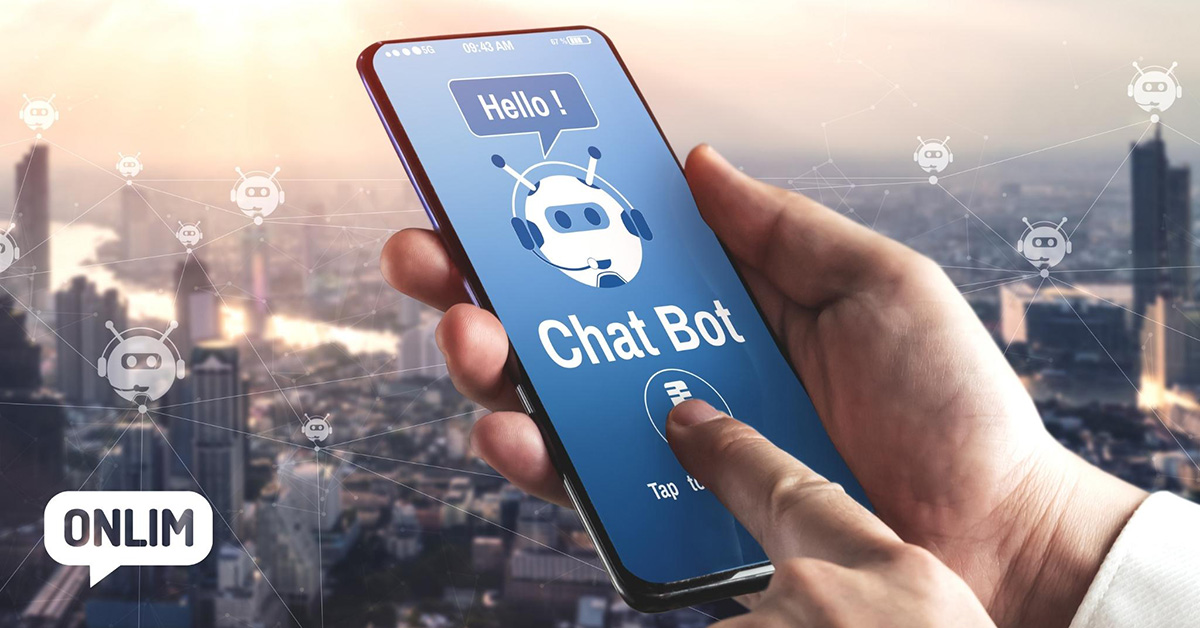
LLM-Chatbots (Large Language Model Chatbots)
LLM-Chatbots, such as those based on large language models like GPT-4, are advanced AI systems capable of understanding and generating human-like text. These chatbots utilize extensive pre-training on diverse datasets to comprehend and respond to a wide range of user inputs.
With their ability to grasp context, infer meaning, and generate coherent and contextually relevant responses, LLM-Chatbots can engage in more natural and dynamic conversations. This makes them valuable tools for various applications, including customer support, information retrieval, and interactive user interfaces.
Rule-based Chatbots
These chatbots are based on predefined rules and scripts and can only respond to specific questions or requests. However, they can quickly and effectively handle simple requests, such as answering frequently asked questions or checking order status. Rule-based chatbots are particularly useful for standardized processes and clearly defined tasks.
AI-powered Chatbots
These chatbots use machine learning and natural language processing to continuously learn from experiences and feedback, adjusting their responses and actions accordingly. They can conduct human-like conversations and solve complex requests or issues. Through constant learning and adaptation, they offer an increasingly improved user experience.
Hybrid Chatbots
Hybrid chatbots combine rule-based and AI-powered approaches to offer the best of both worlds. They can quickly respond to simple requests while also providing human support when a complex question or issue arises. This flexibility makes them particularly effective and versatile.
Voice-based Chatbots
These chatbots use speech recognition technology and text-to-speech software to enable communication with users through voice. They can be deployed on various devices such as smartphones, smart speakers, or computer systems. Voice-based chatbots offer an intuitive and convenient way of interaction, especially in mobile or hands-free environments.
Messaging Chatbot
Messaging chatbots operate through platforms like Facebook Messenger, WhatsApp, or Slack. They can be directly addressed by users and typically respond quickly and effectively. These chatbots are ideal for the quick exchange of messages and the provision of information in real-time.
Intelligent Assistants
Intelligent assistants are specialized chatbots designed to perform a variety of tasks and provide a personalized experience for the user. For example, they can help plan daily schedules, create shopping lists, find information, or assist the user in navigating through a website or application. These assistants are often deeply integrated into systems and applications to ensure a seamless and efficient user experience.
Artificial Intelligence (AI)
Thanks to advances in Artificial Intelligence, it has become very easy for humans to interact with automated systems or conversational interfaces such as chatbots or voice assistants. These systems are designed to communicate with users in a natural way and effectively and accurately process their requests. AI-based chatbots and voice assistants are continually being developed to better meet the needs and requirements of users.
According to MarketsAndMarkets, the global market for conversational AI is expected to grow from $6.8 billion in 2021 to $18.4 billion in 2026, representing a CAGR of 21.8%. This is due to the increasing adoption of conversational AI technologies in various industries, such as customer service, healthcare, and retail.
Furthermore, the use of chatbots has increased by 67% between 2018 and 2020. This increase is due to the growing automation of customer service and sales processes, where chatbots play an increasingly important role. Chatbots are also used in other areas such as recruitment and e-learning to improve efficiency and user experience.
Der Hype um Chatbots
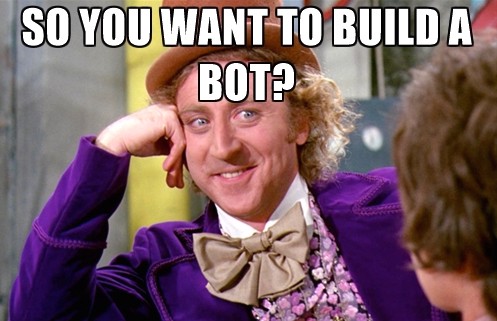
The hype around chatbots gained momentum in 2016, when messaging apps had more active monthly users than social networks for the first time.
Today, chatbots play a significant role in business automation processes.
If you’ve missed the train so far and want to jump on board, you first need to understand what chatbots are and how they work.
In addition, you probably have, like many of our clients, some questions about chatbot implementation, technology, etc., which we will also address.
“Chatbots and voice assistants are more than a new tool. They are about a full-scale transformation process that will permanently change the way we gather information and manage knowledge.”
 Alexander Wahler, CEO Onlim
Alexander Wahler, CEO OnlimOnlim has been active in the chatbot industry since 2016 and has now implemented several hundred successful chatbot projects for medium and large companies from various industries.
We are happy to share our experiences with you in article The Best Chatbot Use Cases From Different Industries.
What are chatbots exactly?
Chatbots are a form of automated service, essentially a robot with which customers can communicate via a chat interface. They rely on Artificial Intelligence (AI), which operates through a set of defined rules and parameters.
Essentially, you engage in a virtual conversation with a robot that can perform certain tasks for you or answer your questions.
How does a chatbot work?
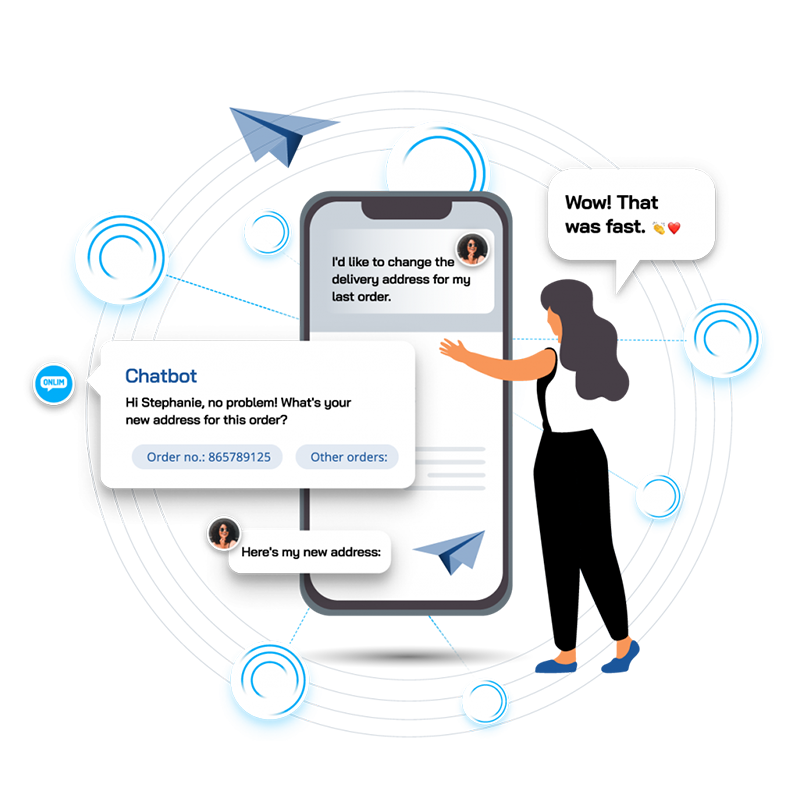
A chatbot functions similarly to a customer service representative. When a customer starts a chat for help, a AI agent responds. For example, the inquiry could be: “What time does your store open tomorrow morning?”
The bot then responds based on the information available to it: “Our store opens at 9am tomorrow and closes at 5pm.”
Nowadays, chatbots can also handle complex inquiries such as:
“My printer isn’t working. I’m getting error code 505. What can I do?”
“I’m looking for a room for 2 adults with my dog for Easter weekend in Neusiedl.”
“How much does a day ski pass cost for adults with a child?”
“I’m looking for a blue carbon mountain bike for women for less than €3,000.”
Have you ever asked Siri or Alexa about the weather forecast in your area? They are also a type of bot, namely voice assistants, and can give a natural-sounding answer to us humans.
What happens in the invisible area for us?
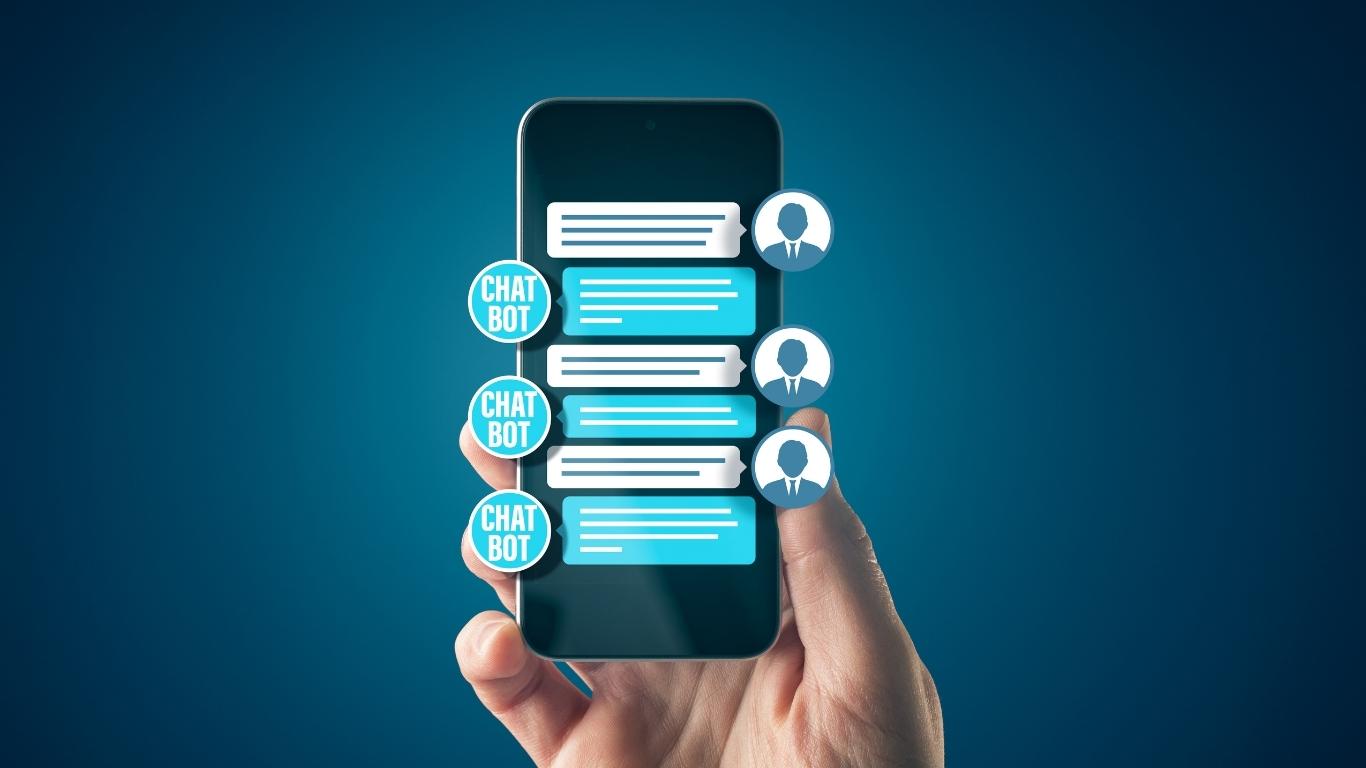
To answer this question, we first need to divide chatbots into two categories.
As mentioned above, all chatbots are a form of artificial intelligence and complex programming. However, there are two types that differ primarily in their essential component. This can be either artificial intelligence and machine learning or structured questions and answers.
Structured by questions/answers.
Chatbots based on structured questions and answers are somewhat less complex than those that use machine learning to fully harness the power of artificial intelligence.
The visible chat interface looks very similar to us. Therefore, users often cannot recognize any difference.
These chatbots have a slightly smaller knowledge base and limited abilities.
In a rule-based chatbot, possible user inputs and corresponding answer options are defined in advance. For example, if a question is asked that was not defined in advance, the chatbot cannot help with answering that question. They can only provide correct output for specific instructions.
This means that the questions asked must correspond to the established programming. Let’s take the weather bot as an example again.
The question “Will it rain tomorrow?” can be easily answered. However, if the bot is not programmed to answer the question “Will I need an umbrella tomorrow?“, it can lead to confusion.
The bot would probably respond with “Sorry, I didn’t understand the question” and can only be as smart as the programming behind it.
If you can only interact with a chatbot through buttons or a predetermined menu and it may be difficult to understand you, you are probably talking to this type of chatbot.
This type of chatbot is often implemented on messenger platforms for marketing purposes, as users do not necessarily need to interact much with the bot. They are good for distributing newsletters or other content, generating leads, or conducting surveys.
Learning through machine learning & knowledge graphs
If you are looking for a customer service chatbot for your company, then this is the right type of automation for you.
Unlike rule-based bots, chatbots that are based on machine learning are able to understand and process natural language. This is done using natural language processing and natural language understanding (NLU).
They understand natural language and therefore do not require such specific commands. They automatically link umbrellas and raincoats, so a deviation from the standard question will not confuse them.
This means that chatbots based on machine learning become smarter with each interaction. The effort behind these automated assistants is, of course, much greater.
Now let’s take a look at the role that knowledge graphs play in this.
How can chatbot conversations be improved?

Two very important factors for the overall performance of a chatbot are the structure and quality of the data available to answer questions. This is where Knowledge Graphs come into play.
A Knowledge Graph is a synonym for a special type of knowledge representation. It stores facts in the form of edges and nodes in a graph. In addition, most knowledge graphs also store the schema of the data. Knowledge graphs realize their full potential, especially in large and complex data structures.
When used for chatbots, a Knowledge Graph offers two direct benefits: improved data integration and a simultaneous improvement in conversations.
New data sources can be more easily integrated, as they only need to be brought into a specific format and schema. Knowledge graphs also offer more flexibility in expanding existing knowledge.
It is also possible to link multiple knowledge graphs together. In this way, a modern managed knowledge database for companies can be built, which can be accessed in natural language, for example, via APIs and interfaces.
How do you know if a chatbot is suitable for your company?
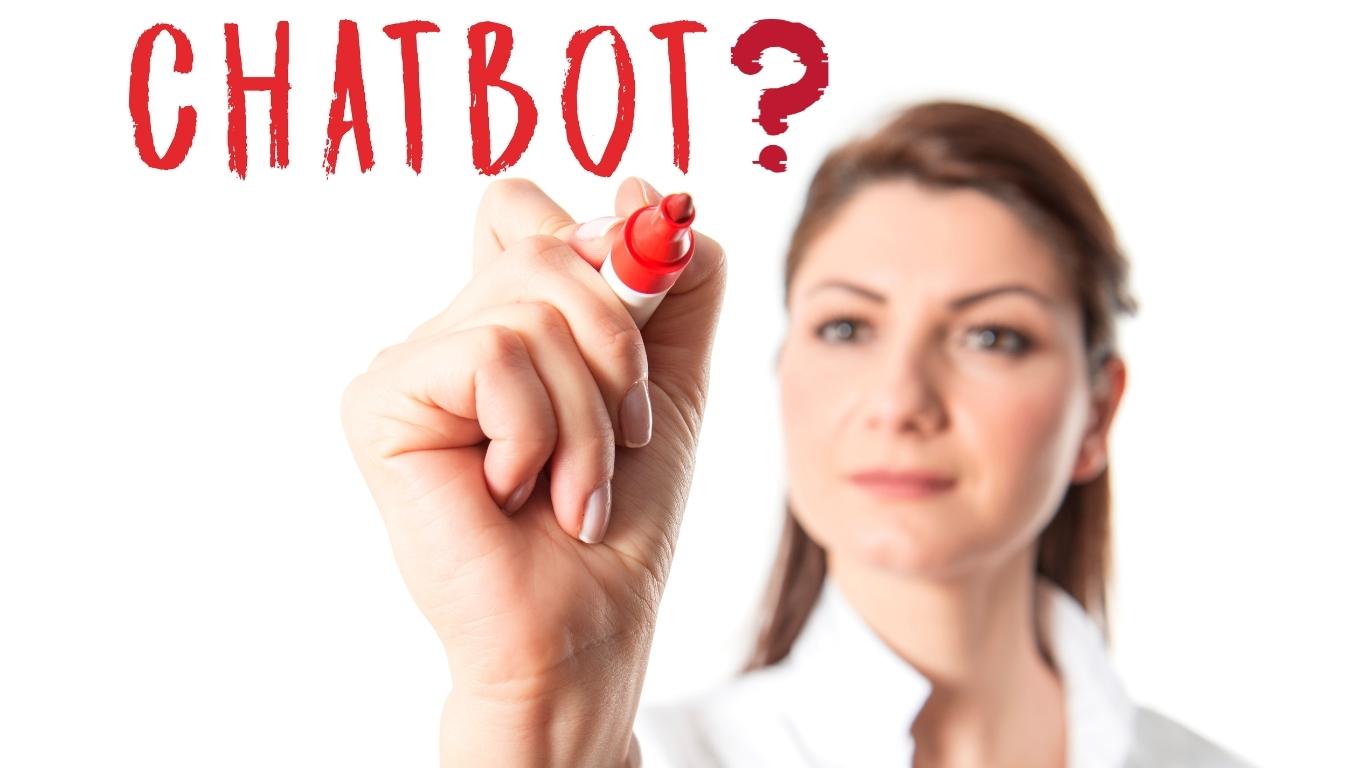
Chatbots are suitable for many industries and use cases. They are known for being able to provide excellent customer service, but there are also some examples in marketing and sales.
Here are some questions as a guide to analyze your current situation and potential benefits of a chatbot:
- How often does your company have direct customer contact?
- Does your customer service receive frequent recurring inquiries?
- How intense are your customer demands?
- Which communication channels do your customers prefer?
- What added value can a chatbot create for your company?
What does a chatbot cost?
Unfortunately, this question is not as simple to answer as “How much does a bottle of Fanta cost?”, because the investment you make in a chatbot depends on various factors.
Things like the complexity of the bot, its AI capabilities, its architecture, technical integrations, infrastructure, support during and after launch, and more need to be considered if you want to estimate or compare the costs of a chatbot.
While you can sometimes start for free with very simple bot builders, you may pay setup fees for chatbots built with more advanced bot builders, which can range from €1,000 to €15,000+ and monthly fees between €100 and €5,000+.
We would be happy to provide you with information about our products and prices upon request.
How does the implementation process look like?
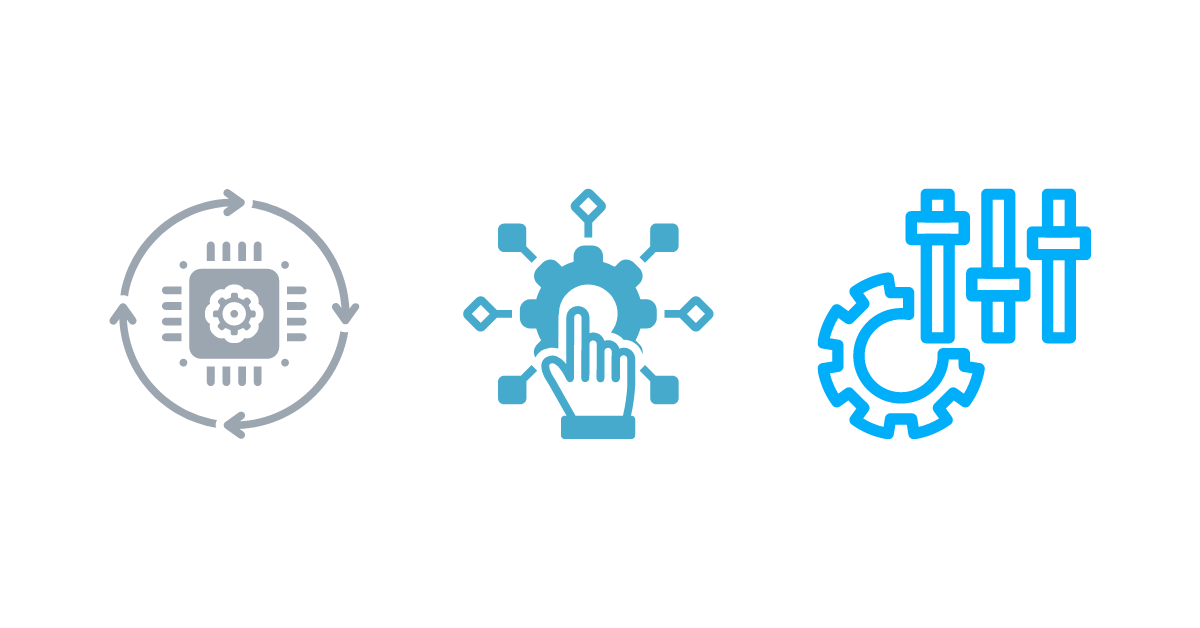
This also depends on the factors that are crucial for the costs of the chatbot. At Onlim, we define and implement custom content and all necessary interfaces to data sources together with our customers. In addition, preconfigured modules are available through our conversational AI platform. After the technical setup is completed, thorough testing and optimization are performed before the chatbot goes live. Customers can then manage all chatbot content, analytics, and more through our SaaS platform.
How long does the implementation take?
Our current record is 3 weeks from commissioning to go-live. However, on average, we estimate a turnaround time of 6-10 weeks after commissioning.
What’s next?
If your company is ready to join the intelligent chatbot revolution, schedule a non-binding consultation with Onlim.
We are experts in conversational AI and offer an intelligent chatbot and voice assistant solution.
It is based on state-of-the-art natural language processing (NLP) and knowledge graph technology, includes standardized data and interface connections, and can be installed on websites, apps, messengers, phone systems, or Amazon Alexa.
In addition, our solution can be easily operated and managed without programming knowledge.
In a first step, we can help you identify the best use cases for chatbots in your company.
Knowledge-Driven Conversational AI For Customer Service Automation
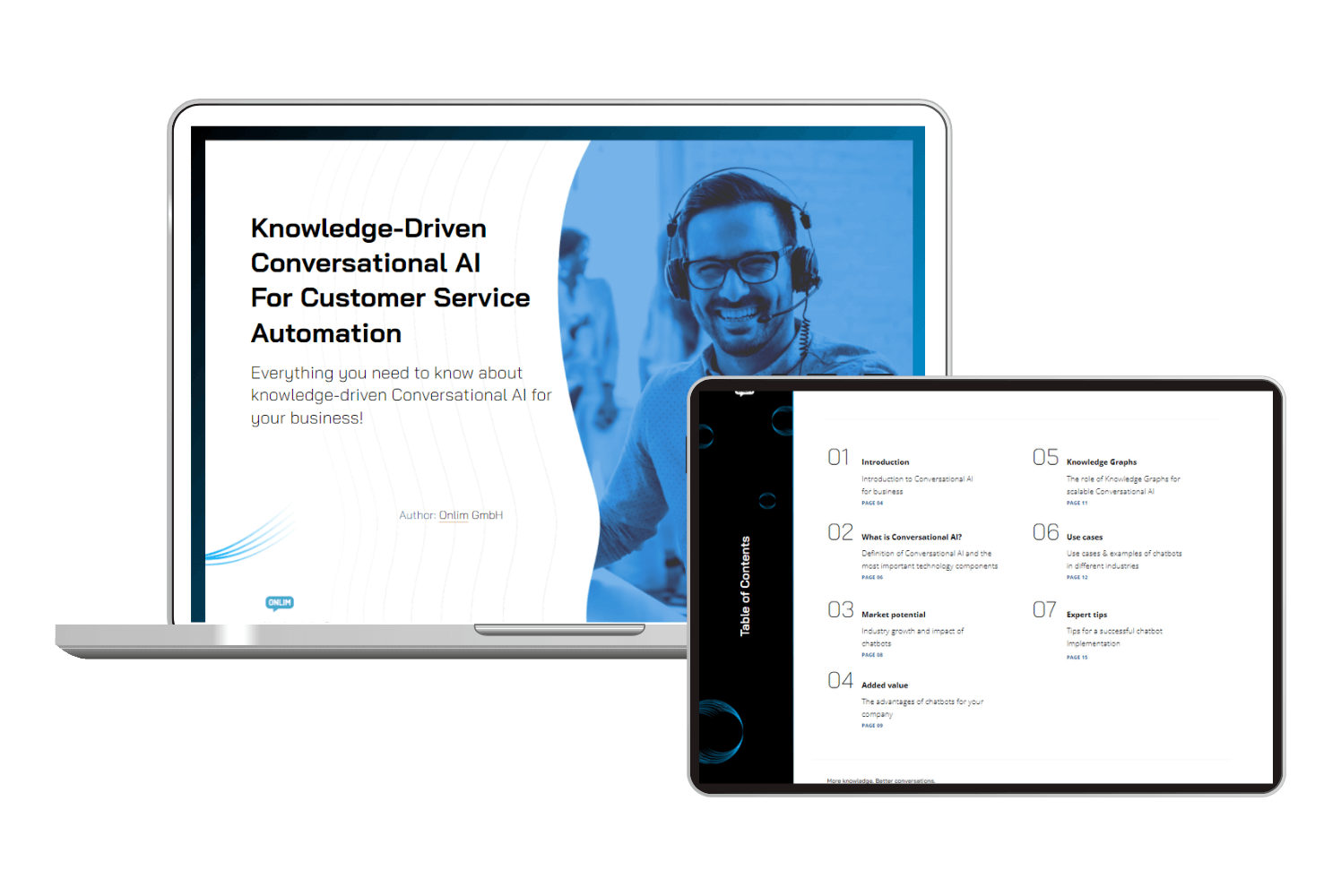
Retrieval Augmented Generation (RAG)
July 10th, 2024|
Is a voicebot right for my company?
June 18th, 2024|
What is Generative AI?
June 11th, 2024|
